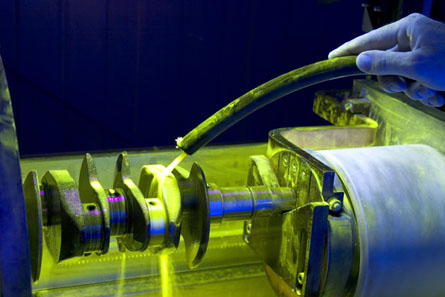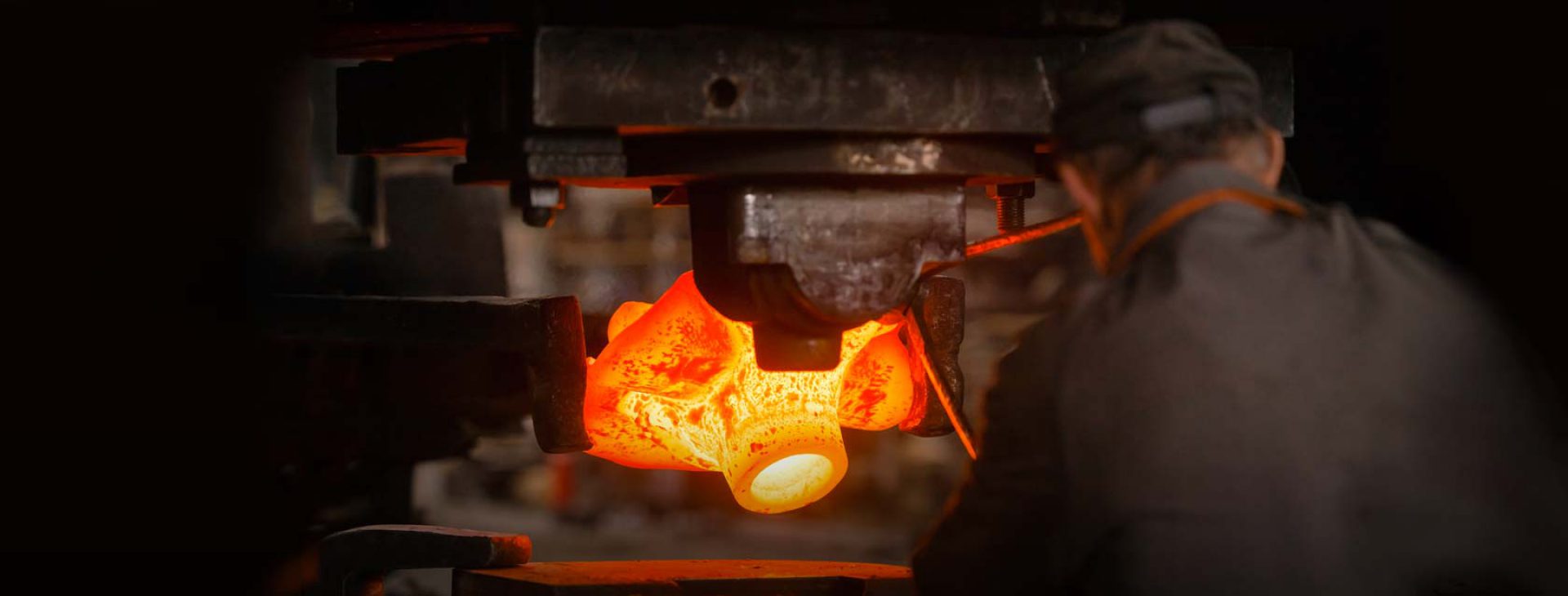What is NDT?
Nondestructive Testing (NDT) is one of the main procedure of quality control in steel forging, and plays an important role in assuring that steel forgings will perform their usage in a safe, reliable, and cost-effective manner. NDT technicians perform the necessary tests to locate the indicators and discontinuities that may cause failures or shut downs in such systems. These tests are performed in a manner that does not affect the future usefulness of forgings– hence, the name “nondestructive.” NDT allows for careful and thorough materials evaluation without the need for deconstruction or damage. NDT is typically used at various points in a part’s life cycle. NDT can be used prior to the use of a component for the sake of quality control. NDT is also employed while components are in use to detect service related conditions caused by wear, fatigue, corrosion, stress, or other factors which affect reliability.
NDT Testing Methods Performed on Steel Forgings:
 Magnetic Particle Testing (MT)
Magnetic Particle Testing (MT)
Magnetic Particle Examination is accomplished by inducing a magnetic field into a ferromagnetic material and applying iron particles to the surface of the forgings being examined. Surface and near-surface discontinuities affect the flow of the magnetic field within the part causing the applied particles to gather at locations of flux leakage, thus producing a visible indication of the irregularity on the surface of forgings.
Visual and Optical Testing (VT)
Visual Examination can be an effective way to recognize surface imperfections that could adversely affect our steel forgings. Visual Examiners use knowledge of how a steel forged part is manufactured, the function of the human eye, lighting requirements, and precise measuring tools to evaluate materials. Computer controlled camera systems and optical aids such as borescopes may also be used to recognize and measure features of a component.
Radiography (RT)
Radiographic Examination involves using radioactive isotopes (gamma rays) or X-rays on steel forgings to peer qualitatively for indications the same way a doctor looks for fractures or other conditions within the body. Radiation is directed through a steel forging part and projected onto film or a digital detection device leaving an image which can be examined by the qualified Radiographer.
Ultrasonic Testing (UT)
Ultrasonic Examination uses high-frequency sound waves which are transmitted into forged steel part to detect discontinuities or locate changes in material characteristics. Sound is introduced into the steel forging part being examined and reflections from internal imperfections, areas of acoustic impedance, or varying geometrical surfaces are returned to a receiver.
Penetrant Testing (PT)
Penetrant Examination is performed with a dye solution. Once applied to the surface of steel forgings, the dye will effectively penetrate any surface-breaking cavity. Excess solution is removed from steel forgings. A developer is then applied to draw out any penetrant that remains unseen. With fluorescent dyes, ultraviolet light is used to make the “bleed-out” fluoresce brightly, allowing imperfections to be readily seen. With visible dyes, a color contrast between the penetrant and developer makes the “bleed-out” easy to see.
Although steel forgings will produce less defects than castings. It is avoidless that there may exsit some defects caused by different reasons. To ensure qualified products, NDT testing is usually required for critical components. MPI is the most common way to inspect steel forgings for some cracks. Cost of NDT testing willl be charged from our customer. To save cost, we could also select parts of the steel forgings to do NDT testing. If you have any steel forgings with NDT testing requirement, pls feel free to contact us.

